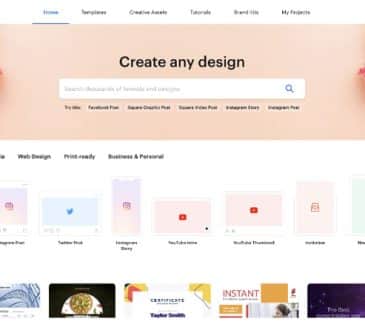The Tech Talent Shortage: Global report addresses today’s critical hiring and retention challenges.

An outside observer of recent tech layoff headlines might be surprised to know that organizations are struggling to fill critical tech talent gaps and that the demand for qualified professionals exceeds the supply.
According to Gartner, 86% of CIOs report increased competition for qualified candidates. Research from the U.S. Bureau of Labor Statistics confirms that the shortage of available talent will grow to 1.2 million by 2026 in the United States alone.
Finding qualified tech employees is just the first challenge. The second is retaining them. Another Gartner survey found that only 29% of IT workers have high intent to stay with their current employer. Replacing these workers will get more expensive as the talent pool shrinks and competition rises.
Recognizing the urgency of the talent shortage, an American company specializing in software engineering services conducted a two-part report in partnership with a global insight-driven research company to investigate these critical challenges.
This report surveyed more than 900 senior technology and human resource (HR) leaders from nine countries across North America, Europe and Asia. The second and final installment attempts to uncover why technologists leave their organizations and identify changes leadership can make to retain these vital individuals.
Why are Technologists Resigning?
Unsurprisingly, senior technology and people leaders aren’t satisfied with their talent development and retention strategies. Only 13% of those surveyed were satisfied, which drops to 11% when asked about hiring strategies.
While people and IT teams may disagree about the importance of these reasons, the three most cited reasons were frustrations with tools, micromanagement, bureaucracy and the technology delivery processes. Other reasons for resignation included a lack of control over workspaces and processes and insufficient training opportunities.
Further, an inability to attract and retain technologists creates a snowball effect, resulting in further turnover and ineffective hiring efforts. For example, employees who decide to stay may endure a heavy workload. If new staff isn’t onboarded, these workers can become discouraged and experience burnout and may eventually resign, placing an even greater strain on the remaining team.
Businesses that cannot maintain adequate staffing levels can develop poor reputations as employers, dissuading talented prospects and technology leaders. As a result, companies may need to devote additional resources and pay technical personnel even higher salaries to entice them to join or stay.
Enhancing Recruiting and Retention Efforts
The report discusses several strategies businesses can leverage to improve recruiting and retention, such as giving technology leaders within an organization the authority to lead change. In the issue of tooling and process frustrations, for example, technology leaders are uniquely positioned to align tooling with the technologists’ needs and push for changes that create a more innovative work environment. This approach also promotes ownership and reduces micromanagement, another key attrition trigger.
Regarding technologists’ concerns with not enough growth opportunities, the report suggests that companies provide specialized technical career paths for highly experienced engineers as well as management training for those individuals who want to become leaders or managers. Companies can help these aspiring managers achieve their goals by creating mentoring programs that simultaneously benefit junior colleagues and foster a culture of communal growth and learning.
Businesses must communicate these benefits to prospective candidates and magnify their value proposition, highlighting their unique offerings and technologist-first programs. Other enticing benefits might include a commitment to work-life balance, meaningful projects and a vibrant and collaborative culture.
Further, companies can ensure their new hiring and retention strategies are effective by aligning them with overall business objectives. As such, there must be clearly defined metrics, such as time-to-fill for critical tech roles, retention rates and skill development trackers. C-suite leaders should have dashboards with access to these metrics to support data-driven decisions.
Syncing People and IT Departments
The report identifies a lack of mutual trust between people and tech leaders when managing the tech talent lifecycle. Over half of HR leaders doubt the IT team’s ability to hire, develop and retain technologists; likewise, over half of IT leaders were skeptical of the HR team’s technical capabilities.
Moreover, people and IT leaders couldn’t agree on why technologists resign. HR leaders consistently rated things more severely than tech ones – in fact, their ratings were 30% higher in several instances. The report further highlights this disconnect by revealing that when asked, only 12% to 19% of people and technology leaders believe both parties to be equal partners in recruiting, developing and retaining technologists.
Businesses must strive to amend these disagreements between technical and HR leaders to prevent an “us vs. them” mentality. One approach is through education, improving the technology literacy of those on the people side of the organization while upskilling technologists on the fundamentals of talent management. A shared governance model comprised of cross-functional committees could also ease tensions through shared decision-making and collaboration.
Recognizing and Responding to Change
Traditional approaches to hiring, developing and retaining talent are no longer viable, and organizations that embrace change first will achieve a significant leg up in this new landscape. By strengthening the collaboration between people and technology functions, organizations can better support technologists throughout the talent lifecycle and improve overall business performance.
Written by Dr. Sandra Loughlin.
Have you read?
Ranked: The most and least expensive US states to retire in 2024.
The Most (And Least) US States For A Family Of Four, 2024.
The Most (And Least) Costly US States For Single Workers, 2024.
These Are The 100 Best U.S. Cities for First-Time Homebuyers for 2024.
American News Brands For CEOs: Top 20 news websites in the United States for 2024.
Add CEOWORLD magazine to your Google News feed.
Follow CEOWORLD magazine headlines on: Google News, LinkedIn, Twitter, and Facebook.
This report/news/ranking/statistics has been prepared only for general guidance on matters of interest and does not constitute professional advice. You should not act upon the information contained in this publication without obtaining specific professional advice. No representation or warranty (express or implied) is given as to the accuracy or completeness of the information contained in this publication, and, to the extent permitted by law, CEOWORLD magazine does not accept or assume any liability, responsibility or duty of care for any consequences of you or anyone else acting, or refraining to act, in reliance on the information contained in this publication or for any decision based on it.
Copyright 2024 The CEOWORLD magazine. All rights reserved. This material (and any extract from it) must not be copied, redistributed or placed on any website, without CEOWORLD magazine' prior written consent. For media queries, please contact: info@ceoworld.biz
SUBSCRIBE NEWSLETTER








